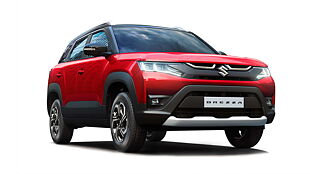Introduction

This month the Maruti Suzuki Baleno has lived solely in the city. And I have discovered some great, some good and some not so nice bits about the car.
First, the great bits

The ergonomics – which includes everything from the lovely driving position (helped of course by a height adjustable driver’s seat and a steering that adjusts for both reach and rake); to the easy to reach and operate controls for the infotainment system, the light and wipers, and the climate control; to the effortless ingress – is spot on.

The gear-shifter falls easily to hand too, and the floor pedal positioning (for the accelerator in relation with the brake, clutch and even the dead pedal) is beautifully spaced and comfortable; at least for my limbs.
Now the good bits

Voice activation. It’s not as elaborate as the systems I have seen on Fords, for instance, but it works wonderfully well, nonetheless. It can call a contact or number; help navigate to a location; read a text message off the phone; and select some media related stuff too, though not all. All this at just a press of a button and some casual chitchat. It is intuitive and simple.
I also like the view over the hood and through the large outside rear view mirrors. Sure, the visibility via the A- and C-pillar is a bit suspect, but it isn’t bad enough to give me nightmares when tackling bustling city streets. Or parking. Plus, there’s a reversing camera and lots of beeping sensors.

The Baleno has good seats all round too; these are cushy and large and feel comfy instantly. The drawback here is the lack of adequate firmness. Because these are a tad too soft, one does tend to roll off them and into the doors when tackling roundabouts with enthusiasm. Other good bits, meanwhile, include many cup and bottle holders; soft padding for front armrests, both on the door and on the centrally placed armrest; and nice haptic feedback from the touchscreen.
The NOT so nice bits

Ride quality. Slow speed ride in particular on the Baleno can get to you. It’s noisy, and one can feel almost everything inside the car. The ride gets harsh too, over almost everything that lacks a rounded edge; potholes, bumps, road joints, patchwork, rumbler strips, and what have you. I also don’t like the flimsy driver height adjustable lever or the lack of a central rear armrest or the missing rear aircon vents, things that take away from the Baleno’s upmarket appeal.
And of course, there’s the boot. It’s huge for its class, and we love it for that, but just getting a heavy suitcase over than high loading lip almost destroyed my back. The Baleno’s satnav system needs an upgrade too. It doesn’t have a few essential roads mapped (and that’s in a city like Mumbai; in smaller cities, the situation might be worse). So, it takes you via a circuitous route wasting time.
Now, the best bit!

As they say, save the best for last. And in the Baleno’s case, when it comes to living with the car in the city, it has to be its 1.2-litre, four cylinder petrol engine. It makes less than 90bhp, but then the Baleno weighs little as well. Plus, the gearing on the car is beautifully selected for city use. All one needs is around 2,500rpm and there’s enough torque to pull the Baleno along without bother. In almost every gear. Even when loaded. The engine is quiet, refined and vibe-free in this operating range as well. Moreover, with a light throttle and these early upshifts, the Baleno has been returning nearly 15.5kmpl! That’s in a city like Mumbai, for a petrol car. Outstanding! The trip computer is a little over optimistic, of course, but not by much. It has been reporting around 16.4kmpl.
Next month, we will find out the Baleno’s mile munching capabilities…
Pictures: Kapil Angane
Read: Maruti Baleno Long Term Report 1
Read: Maruti Baleno Road Test
Maruti Suzuki Baleno DDiS vs Honda Jazz i-Dtec vs Hyundai i20 CRDI

![Maruti Suzuki Baleno [2015-2019] Image Maruti Suzuki Baleno [2015-2019] Image](https://imgd.aeplcdn.com/272x153/cw/ec/21723/Maruti-Suzuki-Baleno-Right-Front-Three-Quarter-147250.jpg?wm=0&q=80)























